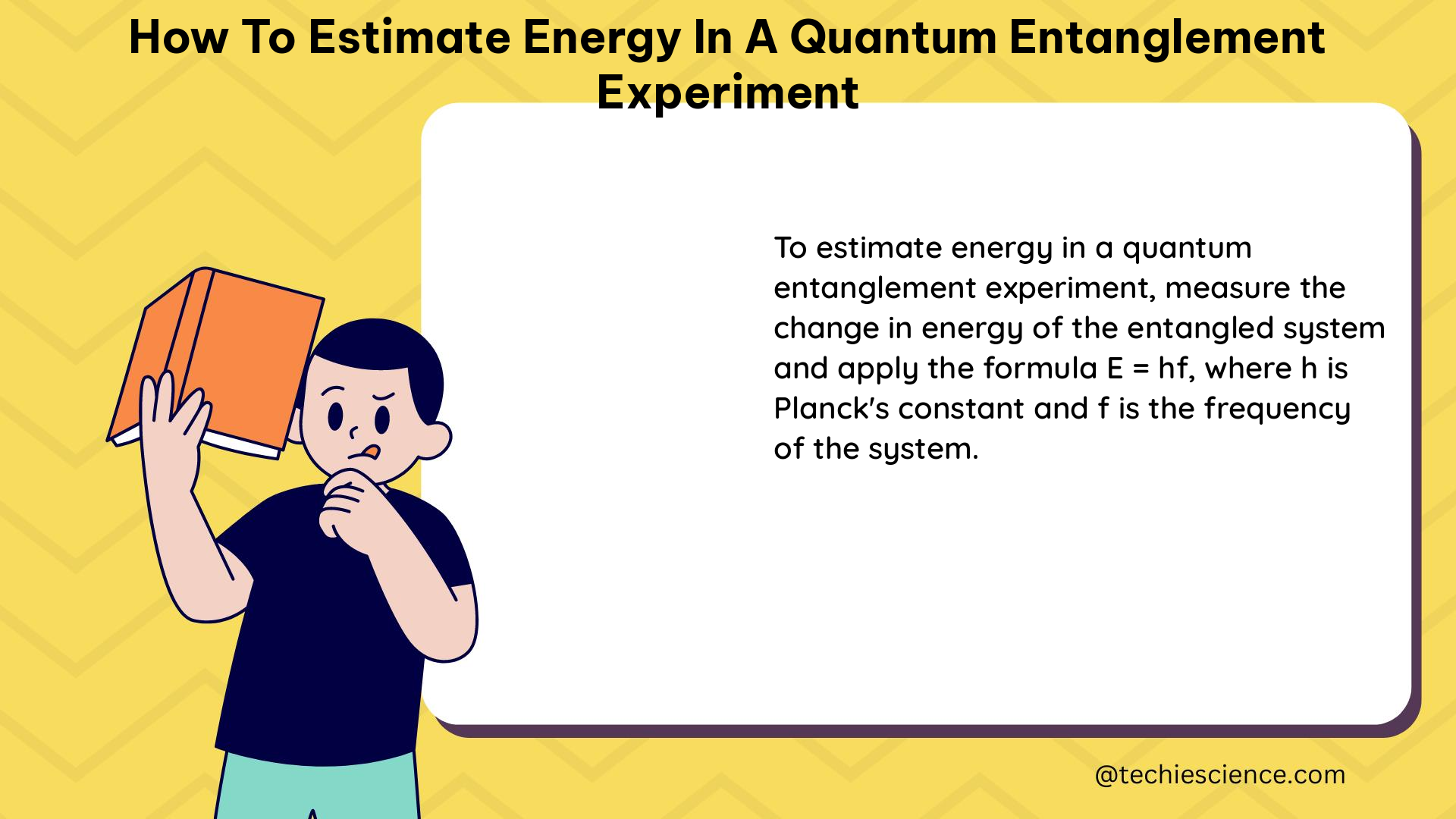Estimating the energy in a quantum entanglement experiment involves a deep understanding of the underlying principles of quantum mechanics, as well as the ability to measure and analyze various parameters that contribute to the entanglement. This comprehensive guide will provide you with the necessary knowledge and tools to effectively estimate the energy in a quantum entanglement experiment.
Entanglement Witnesses: Detecting Multipartite Entanglement
Entanglement witnesses are observables that can be measured experimentally to detect the presence of entanglement. In many-particle systems, the quantum Fisher information (QFI) can serve as a witness for genuinely multipartite entanglement. The QFI is a measure of the sensitivity of a quantum state to a small perturbation, and it can be determined by comparing individual measurements.
To calculate the QFI, you can use the following formula:
QFI = 4 * (Δx)^2
where Δx is the standard deviation of the observable x. By measuring the QFI, you can determine the presence and strength of multipartite entanglement in your quantum system.
Quantifying Entanglement: The Figure of Merit

In a gravitational system with two oscillators, a figure of merit, denoted as η, can be introduced to quantify the entanglement between the oscillators. This figure of merit is a function of the mass (m), angular frequency (ω), and separation distance (L) of the oscillators, and it should be approximately equal to 1 for significant entanglement.
The figure of merit is defined as:
η = (mL^2ω^2) / ℏ
where ℏ is the reduced Planck constant. By measuring the relevant parameters and calculating the figure of merit, you can estimate the degree of entanglement in your system.
Entanglement Dynamics: Covariance Matrix and Logarithmic Negativity
The entanglement dynamics, which describe how entanglement changes over time, can be studied using the covariance matrix and the logarithmic negativity. The covariance matrix is a mathematical representation of the correlations between the different degrees of freedom in the system, and it can be used to calculate the logarithmic negativity, which is a measure of the entanglement.
When starting with the ground state of each oscillator and assuming negligible environmental noise, the maximum entanglement is given by:
Emax th = ln2
This represents the maximum theoretical entanglement that can be achieved in your system.
Enhancing Entanglement: The Role of Squeezing
Single-mode squeezing of the initial ground state of each oscillator can significantly enhance gravity-induced entanglement. The corresponding maximum entanglement becomes:
Emax sq = ln2 + sj
where sj is the degree of squeezing of the jth oscillator. By applying squeezing to your system, you can increase the maximum achievable entanglement.
Environmental Factors: Temperature and Noise
The entanglement in your system can be affected by various environmental factors, such as temperature and coupling to the environment. Weaker entanglement is generated with increasing temperature of the masses or coupling to the environment.
The ratio between any two consecutive terms in the Hamiltonian, given by:
Δx/Δp = L/mω
provides a measure of the relative importance of different terms in your system. This ratio can be used to understand the impact of environmental factors on the entanglement.
Experimental Setup: Entangled Particles and Compton Polarimetry
To build a quantum entanglement experiment, you can use a source of entangled particles, such as a disk of radioactive sodium-22, and detectors to measure the particles’ properties. Compton polarimetry can be used to measure the photons’ polarization, which is a key indicator of entanglement.
When setting up your experiment, consider the following:
– Choose a suitable source of entangled particles
– Ensure accurate measurement of the relevant parameters (mass, frequency, separation distance, etc.)
– Minimize the impact of environmental factors (temperature, noise, etc.)
– Utilize Compton polarimetry to measure the photons’ polarization
By following these guidelines and applying the theoretical frameworks discussed, you can effectively estimate the energy in your quantum entanglement experiment.
References
- Quantum Fisher Information as a Witness of Genuine Multipartite Entanglement
- Gravity-Induced Entanglement between Oscillators
- How to Build Your Own Quantum Entanglement Experiment
- Quantum Entanglement and Quantum Metrology
- Quantum Entanglement and Quantum Computation

The lambdageeks.com Core SME Team is a group of experienced subject matter experts from diverse scientific and technical fields including Physics, Chemistry, Technology,Electronics & Electrical Engineering, Automotive, Mechanical Engineering. Our team collaborates to create high-quality, well-researched articles on a wide range of science and technology topics for the lambdageeks.com website.
All Our Senior SME are having more than 7 Years of experience in the respective fields . They are either Working Industry Professionals or assocaited With different Universities. Refer Our Authors Page to get to know About our Core SMEs.